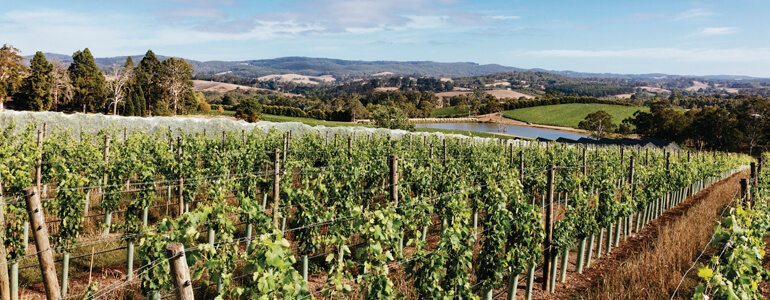Variability in a vineyard should be embraced as an opportunity – and not seen as a negative – says one of the world’s leading precision viticulture experts.
Dr Rob Bramley has been studying detailed vineyard variability for nearly two decades, and says the variability of a vineyard presents a unique opportunity for growers and winemakers – ‘and one they should consider grasping’.

This article was originally published by Wine Australia. Read the original article.

Dr Rob Bramley says the variability of a vineyard presents a unique opportunity for growers and winemakers
‘By knowing their vineyard’s spatial nuances, growers and winemakers can fine tune their management and winemaking practices to suit each individual zone’, said Dr Bramley, Senior Principal Research Scientist in CSIRO’s Integrated Agricultural Systems program here at Waite.
Precision viticulture refers to the use of spatial information to monitor conditions in the vineyard and then make management decisions based on variability in those conditions between different parts of the vineyard instead of treating all areas equally.
In a recently completed project, Dr Bramley and his team sought to understand the ‘yield:quality nexus’ – the presumed link between fruit yield and quality, where it is said that higher yield means lower quality.
‘Our approach was to use the tools of precision viticulture – including yield monitoring, remote and proximal canopy sensing, the global positioning system and methods of spatial analysis – to see whether links between fruit yield and quality could be established at the within-vineyard scale.
‘The results suggest that the link between yield and quality at the within vineyard scale is, at best, a weak one. ‘They also suggest that the typically used fruit quality indicators are not as objective as we would like.’
Dr Bramley said the current challenge is to develop tools and techniques of precision viticulture that are simpler, more cost effective and more available to growers; and which provide robust, actionable, information, including on fruit composition. ‘New sensors may help with fruit quality assessment.’
He is currently leading another project – funded by the Australian Government Department of Agriculture and Water Resources as part of its Rural R&D for Profit program and Wine Australia – to develop a set of ‘user-friendly’ spatial analysis tools that are relevant to the wine sector, accessible and feasible for general use.
While these spatial analysis tools are still to be released, Dr Bramley said there were many cost-effective technologies already available to growers.
‘For example, remotely sensed imagery, which offers an easy opening to determine the extent of vineyard variability costs just $35 a hectare. That’s not expensive when you think about the potential value of that information in terms of what it could save in time and cost further down the track. And it’s only a fraction of the cost that goes into making and marketing a bottle of wine.’
Dr Bramley said he looked forward to the day when growers and winemakers think of the tools and techniques we now think of as ‘precision viticulture’ as just part of the standard winegrowing toolkit.
‘The potential benefits for growers and winemakers are immense.’

